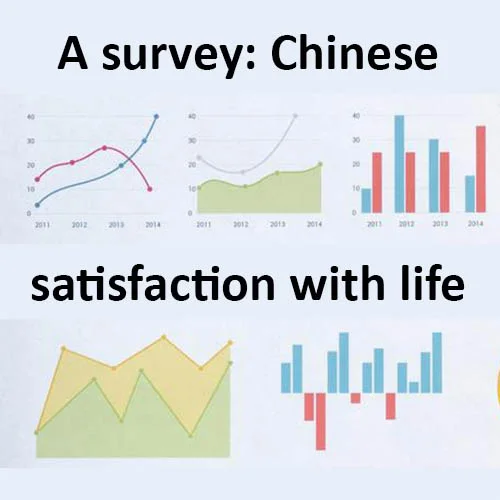NEWS//Chinese satisfaction with life
A recent survey by the Chinese Journal Review provides these insights into the way people in China view their situation. Note the high levels of satisfaction with the services the government provides.
Overall satisfaction with life saw a decline. 49.6 percent of residents in urban and rural areas sampled said they were “very satisfied” or “satisfied” with their overall quality of life, down from 52.8 percent in 2017. Residents who said they were “relatively dissatisfied” or “very dissatisfied” with their quality of life increased to 13.4 percent, up from 12 percent in 2017.
Confidence in the future declined. 68.9 percent of respondents said they were “confident” or “very confident” in the future, which the authors reported was down from 2017, and 10.2 percent of respondents said they had “little” or “no” confidence in the future, an increase over 2017 levels.
Income levels held steady. 75 percent of respondents saw no increase or a decrease in income. 52.2 percent of respondents believed their household income did not increase relative to 2017 levels. 22.9 percent of respondents believed their income decreased relative to 2017 levels.
Expenditures increased. Meanwhile, respondents said their expenditures on healthcare, education, and housing increased. 70.8 percent said they spent more in 2018 as a proportion of their income than they did in 2017. 53.8 percent of respondents said they did not earn enough money to set aside savings.
High levels of satisfaction with government services. Residents reported “very high,” “high,” or “neutral” levels of satisfaction with government services in every area surveyed. Broken out by category this included: Security (93 percent), environment (87.7 percent), housing (84.6 percent), and transportation (84.3 percent), which received the highest scores. The judiciary (71.3 percent), education (75.3 percent), medical care (75.8 percent), and food safety (79.9 percent) received the lowest scores.
Urban-rural divide. Rural resident satisfaction was lower than urban residents, and the urban-rural gap widened over 2017 levels. China’s floating migrant population satisfaction levels on a range of issues “declined rapidly” from 2017 levels, according to the report.
Medical care topped concerns. The researchers categorized concerns into two categories: household and societal concerns. Among household concerns, urban and rural respondents were most concerned about medical care (23.85 percent), income levels (23.21 percent), and education (17.9 percent), although for those with children, education ranked first. Respondents’ concerns about pensions have “increased significantly” over 2017 levels, with 70 percent of respondents anxious about their ability to draw a pension when they retire. The proportion of respondents who said they are worried they “do not have enough money to afford to see a doctor” increased to 29.4 percent over 23.8 percent in 2017; however respondents also reported the quality of medical care improved.
Food safety the top societal issue. Among societal concerns, urban and rural respondents ranked food safety as their top concern (26.41 percent), followed by traffic (12.54 percent), and the environment (no figure reported). The authors noted that, while the environment ranked third, concerns about the environment have dropped significantly relative to 2017 levels. Among environmental issues, residents cited water quality as their top concern.
Full employment, but… The survey found China achieved relatively full employment in 2018; however the proportion of unemployed people in the northeast (13.8 percent unemployed) and those aged between 45-49 (28.6 percent unemployed) both increased by 5.9 percentage points over 2017 levels.
Source: Chinese Journel Review


